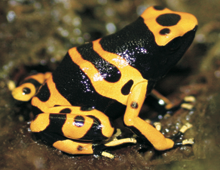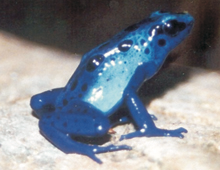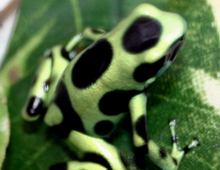
Since “leucomelas” means “white and black” in Greek, it is likely this scientific name was assigned on the basis of colorless museum specimens, preserved in alcohol. In life, these frogs are bright orange-yellow, with black bands or stripes. Like other dart frogs, wild ones, which are poisonous, but captive animals kept on a diet of fruit flies and crickets largely lose their toxicity. This species comes from Venezuela and adjoining areas of Northern South America.




